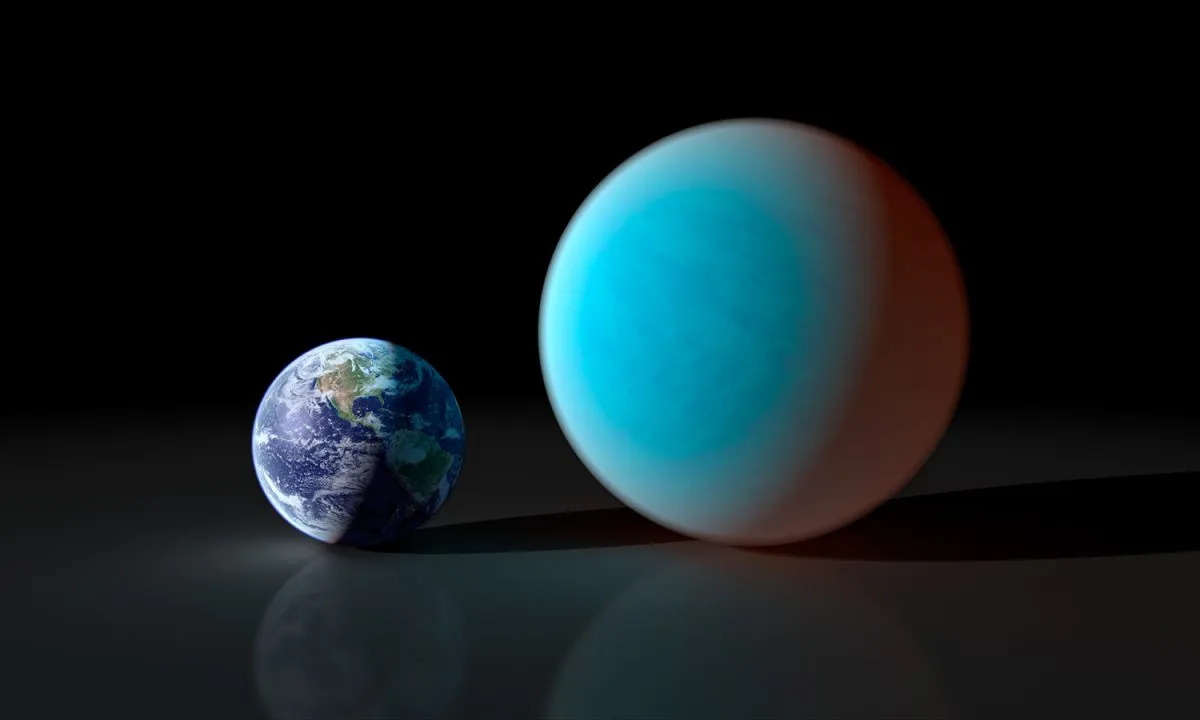Earth has kept a remarkable stable climate over its four-billion-year history, despite the fact that the Sun has been getting steadily brighter over time.
This is because of a naturally operating thermostat, called the carbonate-silicate cycle, which acts to regulate the amount of carbon dioxide in our atmosphere and therefore the amount of insulation from the greenhouse effect.
Silicate rocks on the land get weathered, soaking up the carbon dioxide from the atmosphere and becoming carbonate rocks in the process.
Over time, plate tectonics drag these back into the mantel. Eventually the carbon dioxide gets rereleased into the atmosphere through volcanoes.
Crucially, the rate of erosion on land is dependent on the temperature, and so this negative feedback loop provides natural checks and balances on the global climate.
Planetary system formation suggests terrestrial planets with oceans of tens to hundreds of times more water than Earth’s could be common.
It’s worth noting these effects take tens of thousands of years to come about and will not correct human-induced climate change before the temperature increase has irrevocably changed the world’s ecosystem.
The key question, then, is what happens on exoplanets that formed in the habitable zone with a great deal more water than Earth?
Planetary system formation suggests terrestrial planets with oceans of tens to hundreds of times more water than Earth’s could be common.
Such worlds would have an ocean so deep that no land could protrude above the waves to be weathered – how would that effect the carbonate-silicate cycle thermostat?
The answer suggested by previous climate models is that such deep oceans would accumulate a thick layer of high-pressure ice in the sea floor that would shield the oceanic crust from weathering and block the carbonate-silicate cycle.
With no geological mechanism drawing carbon dioxide back out of the atmosphere, it was thought that any ocean worlds would get hotter with a runaway greenhouse effect.

But, says Akifumi Nakayama and his colleagues at the University of Tokyo, these previous studies have overlooked one critical feature which changes the whole story.
He points out that on a terrestrial planet with plate tectonics, the ocean floor isn’t all the same, average, temperature.
There are hot spots along boundaries in the planet’s crust, just like the mid-Atlantic ridge on Earth where the tectonic plates are hauling apart and fresh magma is welling up to form new ocean crust.
Nakayama’s team have included this key feature in their own planetary climate models and found that the heat released by such ocean ridges is enough to partially melt the high pressure ice on the sea floor.
This warmed water-ice mixture rises up from the sea floor and into the liquid ocean above.
The researchers dub this as a ‘sorbet flow’ due to its slushiness, but it means that the oceanic crust can be weathered and draw carbon dioxide out of the atmosphere and so affect the climate.
In fact, Nakayama calculates that the hot tectonic rifts on an ocean world would be so efficient in driving weathering of their sea floor rocks that they would remove so much carbon dioxide from their atmosphere that they would plunge into cold climates.
If Nakayama is right, many of the ocean worlds in habitable orbits throughout the galaxy could in fact be snowball worlds.
This article originally appeared in the September 2019 issue of BBC Sky at Night Magazine.
Lewis was reading Runaway climate cooling of ocean planets in the habitable zone: a consequence of seafloor weathering enhanced by melting of high-pressure ice by Akifumi Nakayama et al. Read it online here.
